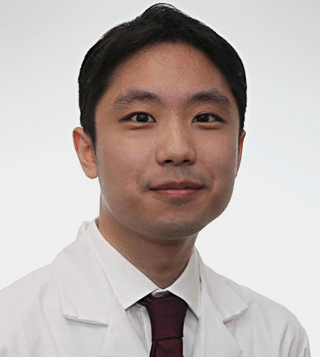What Causes Epilepsy and How Can It Be Treated?
NewYork-Presbyterian neurologists explain what causes epilepsy and how it is treated in children and adults.

Epilepsy is a neurological condition that causes abnormal electrical activity in the neurons of a person’s brain, sending irregular signals to the rest of the body and resulting in recurring seizures.
While it is a common condition that can often be treated successfully with medication or surgery — more than 3 million Americans live with the condition — misconceptions about epilepsy abound. For example, many people believe seizures always involve violent convulsions. However, seizures can be subtle, lasting only a few seconds.
But with the right treatment, those who live with epilepsy can control their seizures and live normal lives. Health Matters spoke with Dr. Alison May, a pediatric neurologist with the Epilepsy Monitoring Program at NewYork-Presbyterian Westchester, and Dr. David Chuang, a neurologist with NewYork-Presbyterian/Weill Cornell Medical Center, to learn more about the causes of epilepsy, the signs and symptoms to watch for, and the different ways it can be treated.

Dr. David Chuang
What causes epilepsy?
About half of people with epilepsy have no known clear cause, but epilepsy can be caused by a variety of factors, including genetics, infection, head trauma or other issues in the brain, such as a stroke, a brain tumor, or a bleed (e.g. a ruptured aneurysm or subarachnoid hemorrhage), says Dr. Chuang. Many people may also have epilepsy due to a small, abnormal brain development that may not lead to symptoms for most of their lives but will cause them to have epilepsy in adulthood.
In children, epilepsy may be more common in those with a developmental condition, such as autism or ADHD. There are some age-related conditions that are more likely to cause epilepsy, including genetic changes or a hypoxic ischemic injury to the brain, says Dr. May. A hypoxic ischemic injury is similar to a stroke, but it occurs during delivery when the baby suffers a lack of oxygen to the brain. Epilepsy can also be caused by cortical dysplasia, a developmental anomaly where part of the brain does not form properly, which is more common in children than adults.
What are the signs and symptoms of epilepsy?
Depending on where the abnormal electrical activity started in the brain and whether it spread to other parts of the brain, a person can experience different seizure symptoms, says Dr. Chuang. A seizure is described as either generalized onset if the whole brain is implicated at seizure onset or focal, in which the seizure starts at just one part of the brain.
How do symptoms vary depending on different types of seizures?
The common types of generalized seizures include absence seizures and generalized tonic-clonic seizures. Both types involve a loss of consciousness. In absence seizures, which occur more frequently in childhood, a person may look like they are staring blankly or spacing out for several seconds. In a tonic-clonic seizure, which typically lasts a few seconds to a few minutes, a person’s whole body may go rigid (the tonic phase), after which they experience full-body convulsions (the clonic phase).
Here’s how symptoms can differ depending on where a focal seizure, which can last from several seconds to several minutes, starts in the brain:
- Frontal Lobe: Hypermotor repetitive movements, a change in behavior, or change in language expression.
- Temporal Lobe: Experiencing an off smell or odd taste, buzzing or ringing in the ears, fear or panic, déjà vu, or abdominal discomfort.
- Parietal Lobe: Numbness or tingling, or a burning or cold sensation.
- Occipital Lobe: Seeing multicolored shapes, such as circles and flashes. Temporary loss of vision. Seizures that begin here are rare.

Dr. Alison May
How is epilepsy diagnosed?
Doctors will refer patients to a neurologist based on their signs and symptoms. With children, who may be too young to explain what they are feeling, parents or caregivers will be asked a lot of questions because a diagnosis will depend in part on what they observe, says Dr. May. They may even be asked to share videos.
If a child seems to space out and doesn’t respond to being touched or having their name called, or if there is a pause or regression in a child’s development or a sudden academic challenge, those can also be markers that something’s going on in the brain. In those instances, parents should speak to their pediatrician and get a referral to a neurologist.
A neurologist will use an electroencephalogram (EEG), a test that uses electrodes to measure electrical activity in the brain, to evaluate brain wave activities and if needed, attempt to capture the actual seizure on video so they can correlate that to the patient’s brain activity. However, EEG can often be normal, says Dr. Chuang, so other supporting tests and assessments may be used to help make a diagnosis, including taking a careful history to see if what a patient experiences is consistent with seizures, or using MRI to look for abnormalities in the brain, such as lesions, that can cause seizures.
To be diagnosed with epilepsy, a patient would have to have two unprovoked seizures — meaning the seizure wasn’t caused by a temporary condition like hypoglycemia (low blood sugar) or alcohol withdrawal — or one unprovoked seizure but with a high risk of having more based on a neurologist’s evaluation, says Dr. Chuang. Once a neurologist determines whether the seizures are focal or generalized, they can decide on a treatment plan.
What are the treatments for epilepsy?
Both children and adults diagnosed with epilepsy would be started on anti-seizure medications. For those who don’t respond to medication, resective epilepsy surgery could be considered, if the patient qualifies for it. With epilepsy surgery, doctors first locate where in the brain the seizures are coming from and, if they can do so without causing any significant negative side effects, they will remove that area of the brain, explains Dr. Chuang.
He adds that typically, people with epilepsy end up taking medication for the rest of their lives, although some people will remain seizure free after being taken off medication after epilepsy surgery. Some may also stop taking medication because they’ve been seizure-free for a very long time and end up staying seizure-free.
If medications don’t work and a patient isn’t a candidate for resective surgery, another option would be neurostimulation. This involves surgically placing a device either under the skin on a person’s chest to stimulate the vagus nerve (a nerve that runs from the brain through the chest) or directly on the brain to send electric signals that help manage seizures.
According to Dr. May, some children can present with seizures at an early age and outgrow them when they get older, typically around the teenage years. The goal is always to achieve what Dr. May calls “seizure freedom,” meaning no more seizures. If a child has a normal EEG, normal MRI, and normal development, they would be a good candidate to try to wean off medication after two years of seizure freedom.
Many people think of epilepsy as being only one specific type, where children have convulsions and significant cognitive impairment. But it can look very different, and families should know that epilepsy does not mean a lifetime of seizures with learning disabilities, adds Dr. May.
Epilepsy can be a scary diagnosis, says Dr. Chuang, and if it’s uncontrolled, it can interfere with the ability to do things like swim or drive a car. But there shouldn’t be a stigma attached to epilepsy, he adds. Most people can control their epilepsy with anti-seizure medications and are able to lead a perfectly normal life.
Additional Resources
- Learn more about the epilepsy services across NewYork-Presbyterian.
- Learn more about the Epilepsy Monitoring Program at NewYork-Presbyterian Westchester.
